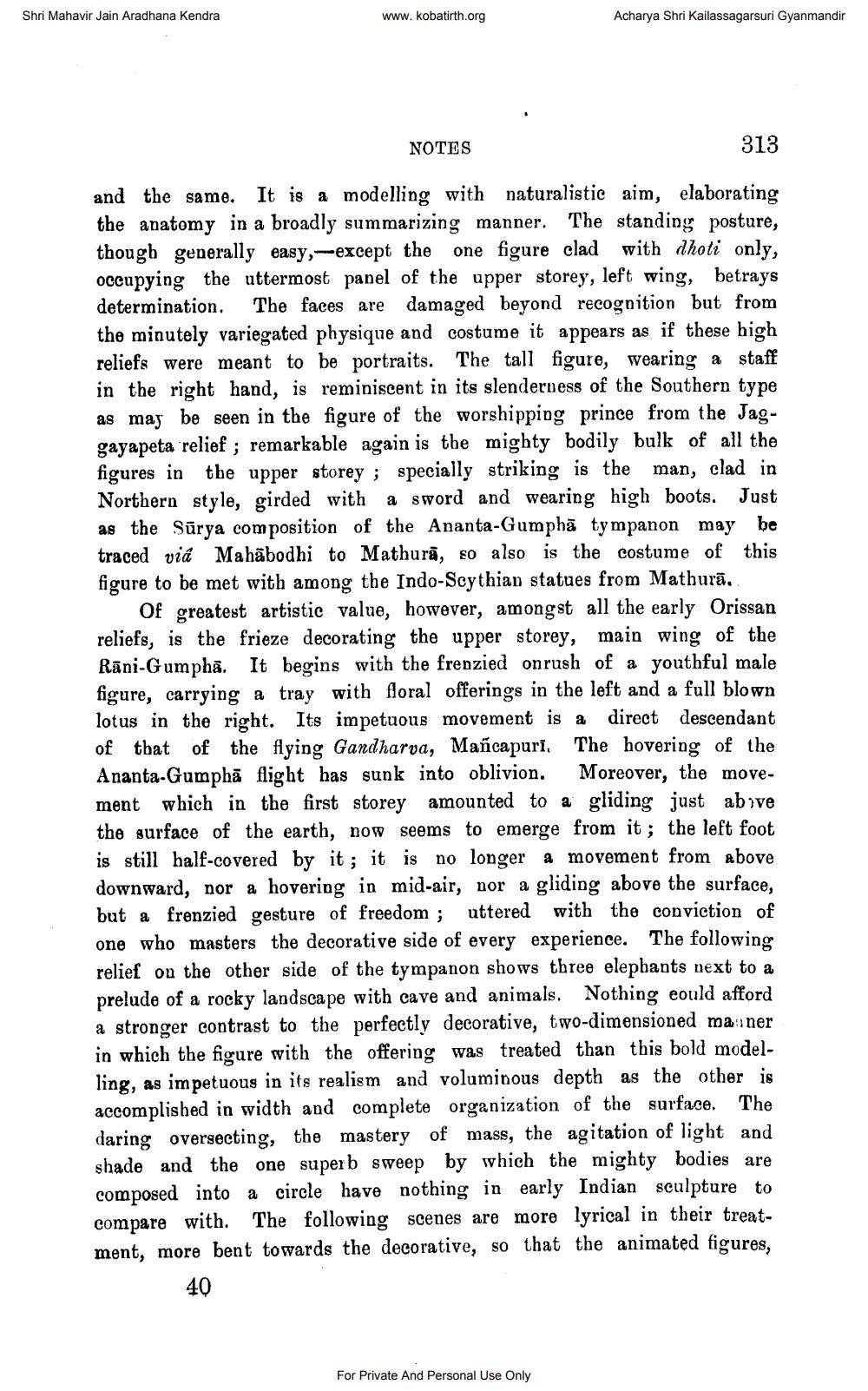________________
Shri Mahavir Jain Aradhana Kendra
www.kobatirth.org
Acharya Shri Kailassagarsuri Gyanmandir
NOTES
313
and the same. It is a modelling with naturalistic aim, elaborating the anatomy in a broadly summarizing manner. The standing posture, though generally easy,-except the one figure clad with dhoti only, occupying the uttermost panel of the upper storey, left wing, betrays determination. The faces are damaged beyond recognition but from the minutely variegated physique and costume it appears as if these high reliefs were meant to be portraits. The tall figure, wearing a staff in the right hand, is reminiscent in its slenderness of the Southern type as may be seen in the figure of the worshipping prince from the Jaggayapeta relief ; remarkable again is the mighty bodily bulk of all the figures in the upper storey ; specially striking is the man, clad in Northern style, girded with a sword and wearing high boots. Just as the Sürya composition of the Ananta-Gumphā tympanon may be traced via Mahābodhi to Mathurā, 80 also is the costume of this figure to be met with among the Indo-Scythian statues from Mathurā.
Of greatest artistic value, however, amongst all the early Orissan reliefs, is the frieze decorating the upper storey, main wing of the Rāni-Gumphā. It begins with the frenzied onrush of a youthful male figure, carrying a tray with floral offerings in the left and a full blown lotus in the right. Its impetuous movement is a direct descendant of that of the flying Gandharva, Mañcapuri. The hovering of the Ananta-Gumphā flight has sunk into oblivion. Moreover, the movement which in the first storey amounted to a gliding just abyve the surface of the earth, now seems to emerge from it; the left foot is still half-covered by it; it is no longer a movement from above downward, nor a hovering in mid-air, nor a gliding above the surface, but a frenzied gesture of freedom ; uttered with the conviction of one who masters the decorative side of every experience. The following relief on the other side of the tympanon shows three elephants next to a prelude of a rocky landscape with cave and animals. Nothing could afford a stronger contrast to the perfectly decorative, two-dimensioned ma iner in which the figure with the offering was treated than this bold modelling, as impetuous in its realism and voluminous depth as the other is accomplished in width and complete organization of the surface. The daring oversecting, the mastery of mass, the agitation of light and shade and the one superb sweep by which the mighty bodies are composed into a circle have nothing in early Indian sculpture to compare with. The following scenes are more lyrical in their treatment, more bent towards the decorative, so that the animated figures,
40
For Private And Personal Use Only




